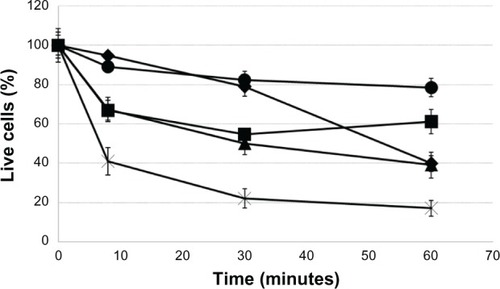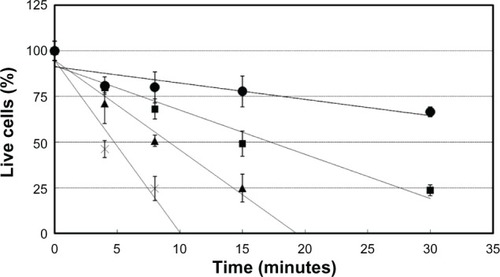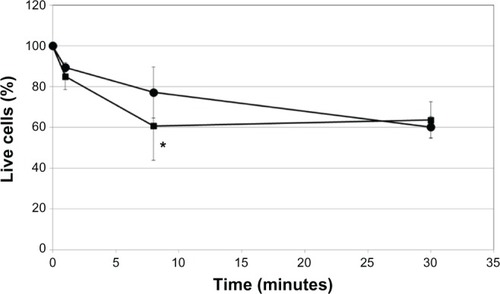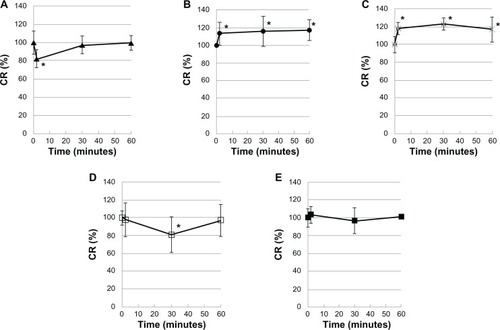Figures & data
Table 1 Composition of five types of antiglaucoma PG analog ophthalmic formulations
Figure 1 Evaluation of five types of antiglaucoma PG analog ophthalmic formulations using cultured cells of a rabbit-derived corneal cell line (in vitro).
Abbreviations: CD50, exposure time causing 50% cell damage; PG, prostaglandin.

Figure 2 Evaluation of BAK using cultured cells of a rabbit-derived corneal cell line (in vitro).
Abbreviations: BAK, benzalkonium chloride; CD50, exposure time causing 50% cell damage.

Figure 3 Evaluation of surface-active agents (HCO-40 and P-80) using cultured cells of a rabbit-derived corneal cell line (in vitro).
Abbreviations: HCO-40, polyoxyethylene hardening castor oil 40; P-80, polysorbate 80.

Table 2 CD50 (minutes), Cr ratio (%), and the relation to AD classification of each ophthalmic solution and additive
Figure 4 Evaluation of five types of antiglaucoma PG analog ophthalmic formulations using corneal resistance measuring device (in vivo).
Abbreviations: PG, prostaglandin; Cr, corneal resistance; SD, standard deviation.
